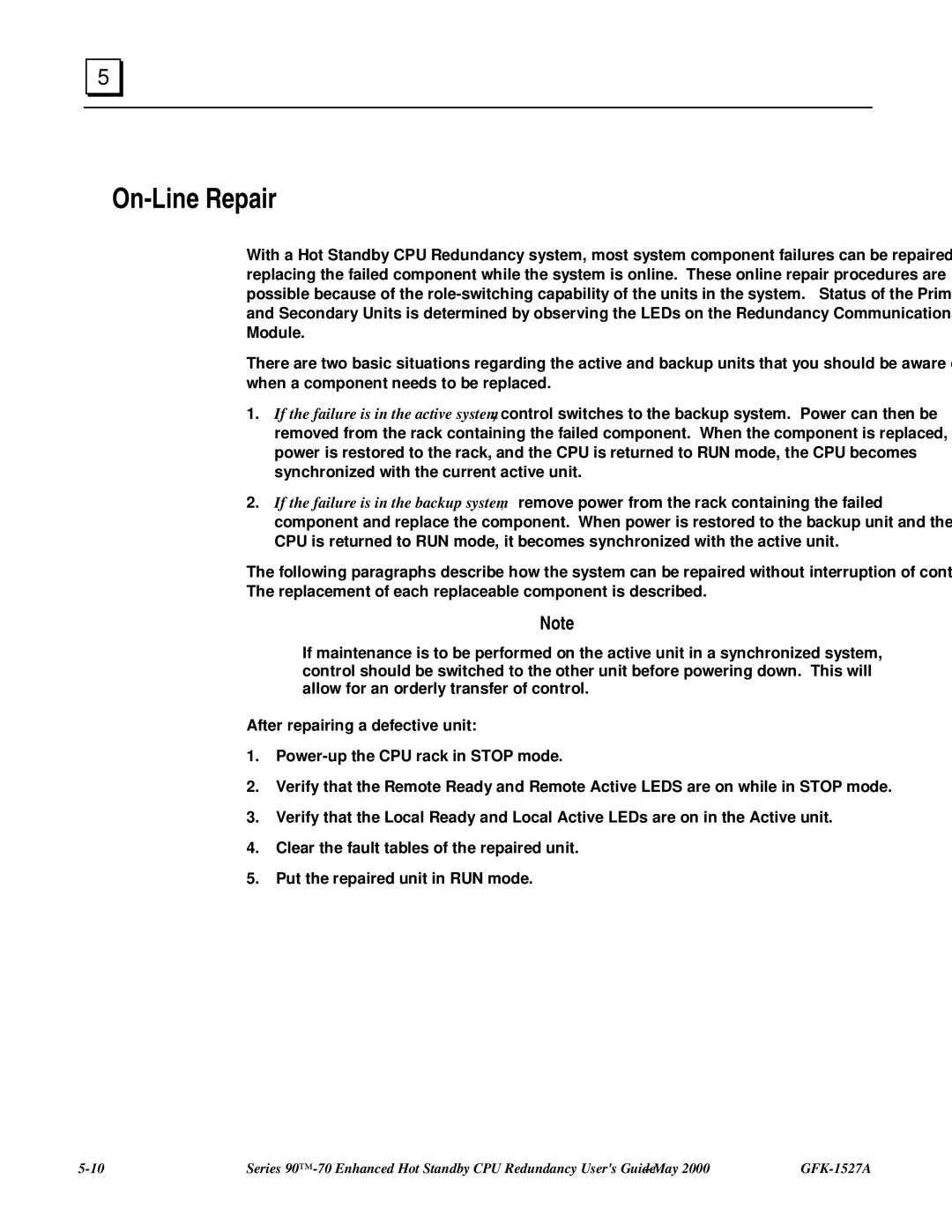5 |
On-Line Repair
With a Hot Standby CPU Redundancy system, most system component failures can be repaired by replacing the failed component while the system is online. These online repair procedures are possible because of the
There are two basic situations regarding the active and backup units that you should be aware of when a component needs to be replaced.
1.If the failure is in the active system, control switches to the backup system. Power can then be removed from the rack containing the failed component. When the component is replaced, power is restored to the rack, and the CPU is returned to RUN mode, the CPU becomes synchronized with the current active unit.
2.If the failure is in the backup system, remove power from the rack containing the failed component and replace the component. When power is restored to the backup unit and the CPU is returned to RUN mode, it becomes synchronized with the active unit.
The following paragraphs describe how the system can be repaired without interruption of control. The replacement of each replaceable component is described.
Note
If maintenance is to be performed on the active unit in a synchronized system, control should be switched to the other unit before powering down. This will allow for an orderly transfer of control.
After repairing a defective unit:
1.
2.Verify that the Remote Ready and Remote Active LEDS are on while in STOP mode.
3.Verify that the Local Ready and Local Active LEDs are on in the Active unit.
4.Clear the fault tables of the repaired unit.
5.Put the repaired unit in RUN mode.
Series |
